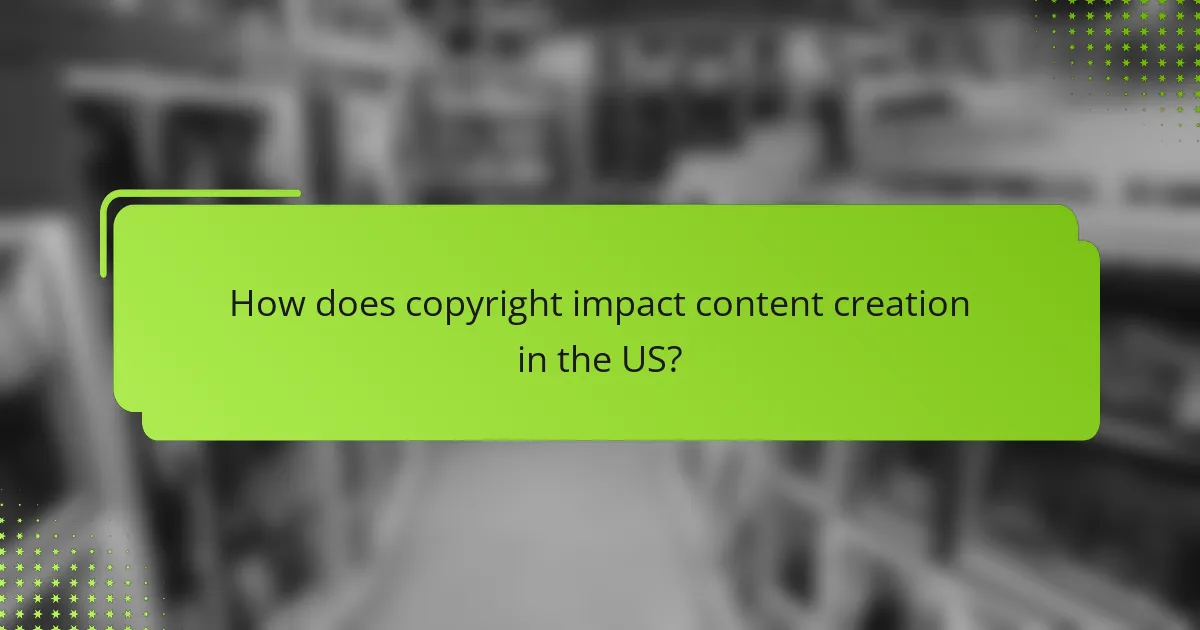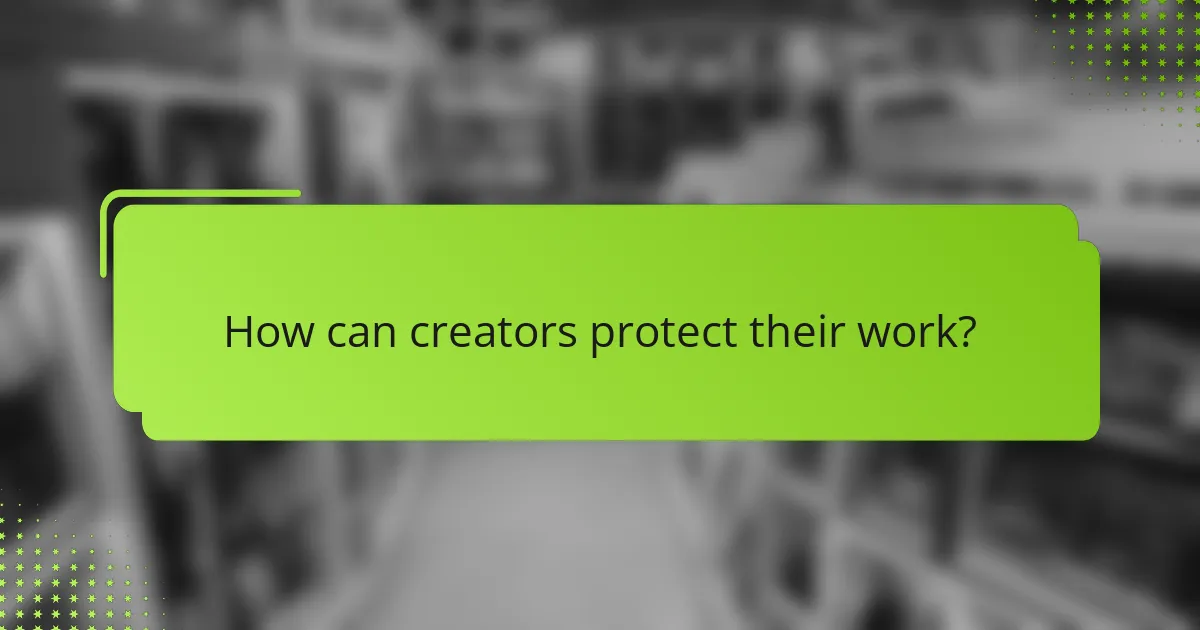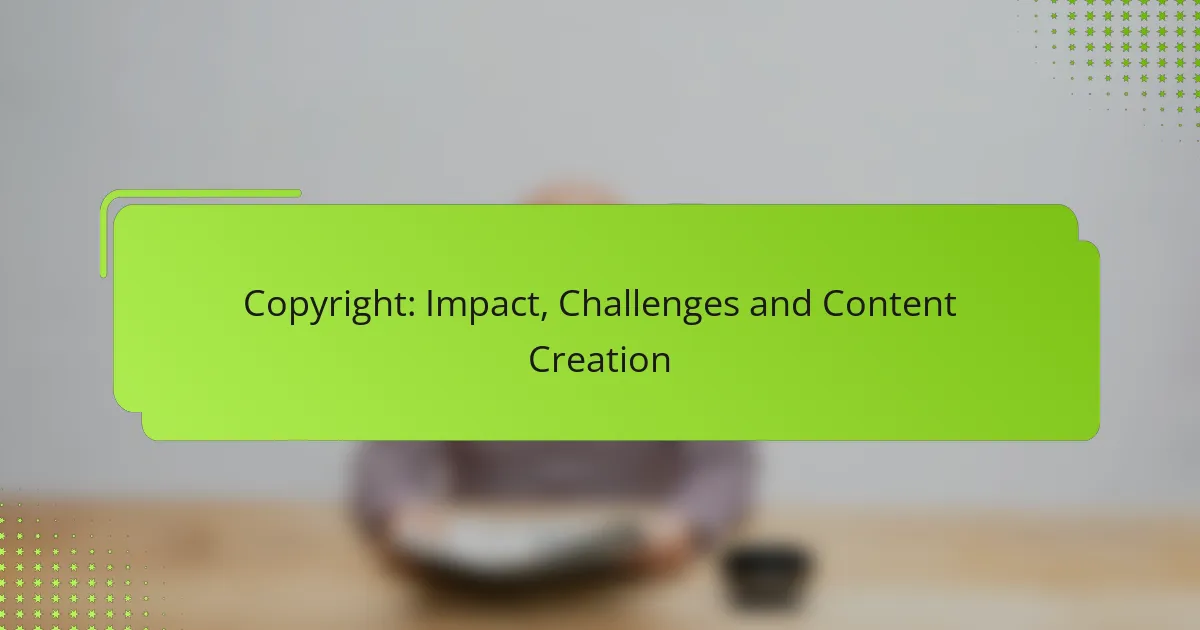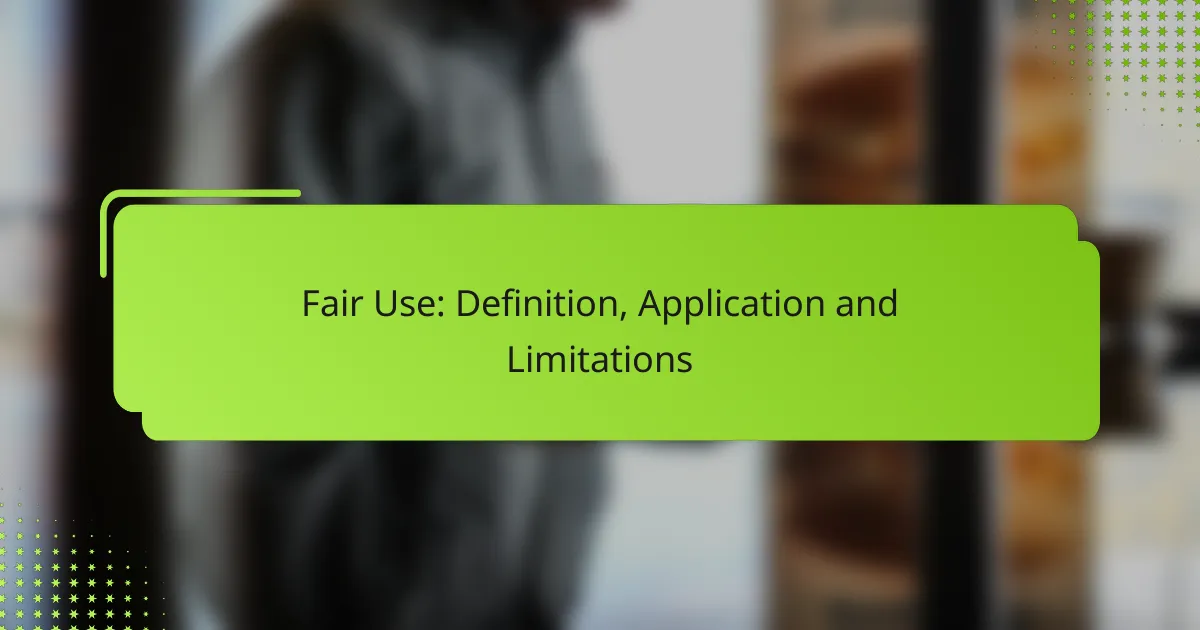Copyright plays a crucial role in shaping content creation by offering legal protections that foster creativity while also imposing certain limitations on the use of original works. Navigating the complexities of copyright laws presents challenges for creators, including the risk of infringement and potential legal disputes. To thrive in this environment, it is essential for content creators to understand their rights and responsibilities, as well as to adopt best practices for compliance and attribution.

How does copyright impact content creation in the US?
Copyright significantly influences content creation in the US by providing legal protections for original works, which encourages creativity while also imposing restrictions on how those works can be used. Creators must navigate these laws to ensure their content is both protected and compliant with copyright regulations.
Legal protections for creators
In the US, copyright law grants creators exclusive rights to their original works, including the right to reproduce, distribute, and display their creations. This legal framework helps safeguard against unauthorized use and piracy, allowing creators to maintain control over their intellectual property.
To benefit from these protections, creators should register their works with the U.S. Copyright Office, although copyright exists automatically upon creation. Registration provides additional legal advantages, such as the ability to sue for statutory damages and attorney’s fees in case of infringement.
Influence on content originality
Copyright encourages originality by ensuring that creators can profit from their unique ideas without fear of imitation. This protection fosters a diverse range of creative expressions, as artists, writers, and musicians are motivated to innovate and produce new works.
However, the need to respect existing copyrights can also limit creativity, as creators must navigate the fine line between inspiration and infringement. Understanding fair use provisions can help creators incorporate existing works without violating copyright laws, but this area can be complex and often requires careful consideration.
Effects on monetization strategies
Copyright impacts monetization strategies by determining how content can be legally sold or licensed. Creators can generate revenue through various channels, such as direct sales, licensing agreements, and subscription models, all of which rely on the protection of their copyrights.
For example, authors can earn royalties from book sales, while musicians may license their songs for use in films or commercials. Creators should explore multiple monetization avenues while ensuring they comply with copyright laws to maximize their income potential without risking infringement claims.

What challenges do creators face with copyright?
Creators encounter several challenges with copyright, including the risk of infringement, the complexity of copyright laws, and the high costs associated with legal disputes. Understanding these challenges is crucial for effective content creation and protection.
Infringement risks
Infringement risks arise when creators unintentionally use copyrighted material without permission. This can lead to legal actions, fines, or the removal of content from platforms. It’s essential for creators to conduct thorough research and obtain necessary licenses to avoid these pitfalls.
To mitigate infringement risks, creators should consider using royalty-free or Creative Commons-licensed materials. Additionally, implementing a content review process can help identify potential copyright issues before publication.
Complexity of copyright laws
Copyright laws vary significantly across countries, making it challenging for creators to navigate their rights and obligations. In the U.S., for example, copyright protection is automatic upon creation, while other jurisdictions may have different registration requirements.
Creators should familiarize themselves with the specific copyright laws relevant to their location and the locations of their audience. Consulting with a legal expert can provide clarity on how to protect their work effectively.
Cost of legal disputes
The cost of legal disputes related to copyright can be substantial, often running into thousands of dollars. Legal fees, court costs, and potential settlements can strain a creator’s budget, especially for independent artists or small businesses.
To avoid costly disputes, creators should invest in preventive measures, such as clear contracts and licensing agreements. Additionally, using alternative dispute resolution methods, like mediation, can be a more affordable way to resolve conflicts without going to court.

What are best practices for copyright compliance?
Best practices for copyright compliance involve understanding and respecting the rights of content creators while effectively using their work. Key strategies include familiarizing yourself with fair use, properly attributing sources, and utilizing copyright-free resources.
Understanding fair use
Fair use allows limited use of copyrighted material without permission under specific circumstances. It typically applies to commentary, criticism, news reporting, teaching, or research. Factors to consider include the purpose of use, the nature of the original work, the amount used, and the effect on the market value of the original.
For instance, using a short excerpt from a book for educational purposes may qualify as fair use, while reproducing an entire chapter likely does not. Always assess whether your use aligns with these factors to avoid potential legal issues.
Proper attribution techniques
Attributing sources correctly is crucial for copyright compliance. This involves giving credit to the original creator in a clear and recognizable manner. Include the author’s name, the title of the work, and a link to the source when applicable.
For example, when using an image from a website, include a caption that states “Image by [Author Name] from [Source]” to ensure proper acknowledgment. Failing to attribute can lead to copyright infringement claims.
Using copyright-free resources
Utilizing copyright-free resources is an effective way to avoid copyright issues. These resources include public domain works and materials released under licenses like Creative Commons, which allow for specific uses without permission.
Websites such as Pixabay, Unsplash, and Wikimedia Commons offer a variety of images and media that are free to use. Always check the licensing terms to ensure compliance with any restrictions or requirements associated with the resource.

How can creators protect their work?
Creators can protect their work through various methods, including registering copyrights, utilizing digital rights management tools, and actively monitoring for infringement. These strategies help ensure that their intellectual property is safeguarded against unauthorized use.
Registering copyright
Registering a copyright is a crucial step for creators to establish legal ownership of their work. In many countries, such as the United States, registration provides legal benefits, including the ability to sue for damages in case of infringement. The process typically involves submitting an application along with a copy of the work to the relevant copyright office.
Fees for registration can vary, often ranging from $35 to $100, depending on the type of work and the country. It’s advisable to register as soon as the work is created to secure rights effectively.
Using digital rights management tools
Digital rights management (DRM) tools help creators control how their work is used and distributed online. These tools can include encryption, licensing agreements, and access controls that prevent unauthorized copying or sharing. For example, eBook publishers often use DRM to restrict the ability to print or share digital books.
While DRM can protect against piracy, it may also limit legitimate user access, so creators should weigh the benefits against potential user experience drawbacks.
Monitoring for infringement
Monitoring for infringement involves actively checking if others are using a creator’s work without permission. This can be done through various methods, including online searches, automated tools, or services that specialize in copyright monitoring. Regular checks can help identify unauthorized uses early, allowing for prompt action.
Creators should consider setting up Google Alerts for their work or using image recognition software to track visual content. Taking swift action against infringement can deter further unauthorized use and reinforce the value of the creator’s rights.

What role do platforms like YouTube play in copyright?
YouTube plays a significant role in copyright by providing a platform for content creators to share their work while also implementing systems to protect copyright holders. Through tools like Content ID, YouTube helps manage copyright claims and revenue distribution, balancing the interests of creators and rights holders.
Content ID system
The Content ID system is a key feature on YouTube that allows copyright owners to identify and manage their content on the platform. When a video is uploaded, it is scanned against a database of copyrighted material, enabling rights holders to claim ownership and decide how their content is used.
Creators whose content is claimed can either dispute the claim, accept it, or allow the copyright owner to monetize the video. This system helps protect intellectual property while still allowing for creative expression, though it can lead to disputes if creators feel their work is unfairly flagged.
Impact on revenue sharing
YouTube’s copyright policies significantly affect revenue sharing between creators and copyright owners. When a video includes copyrighted material, the revenue generated may be redirected to the rights holder, which can reduce earnings for the original creator.
This arrangement encourages creators to use original content or licensed material to maximize their revenue potential. Understanding the implications of copyright on revenue is crucial for creators looking to monetize their work effectively.
Policy enforcement challenges
Enforcing copyright policies on YouTube presents several challenges. The automated nature of the Content ID system can sometimes lead to false positives, where original content is mistakenly flagged as infringing. This can frustrate creators who may need to navigate lengthy disputes to reclaim their rights.
Additionally, the sheer volume of content uploaded daily makes it difficult for YouTube to monitor all copyright claims effectively. Creators should be proactive in understanding copyright laws and how they apply to their content to avoid potential pitfalls.



